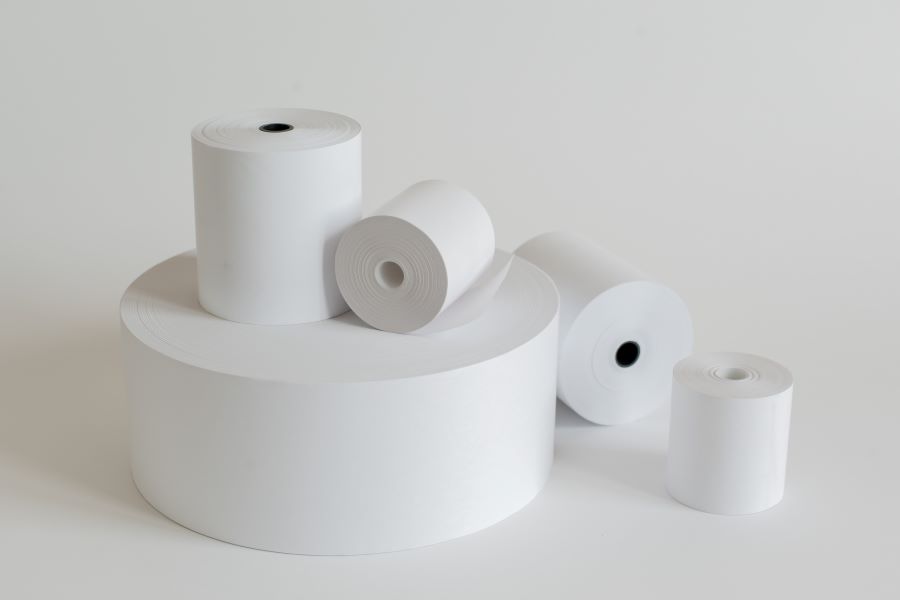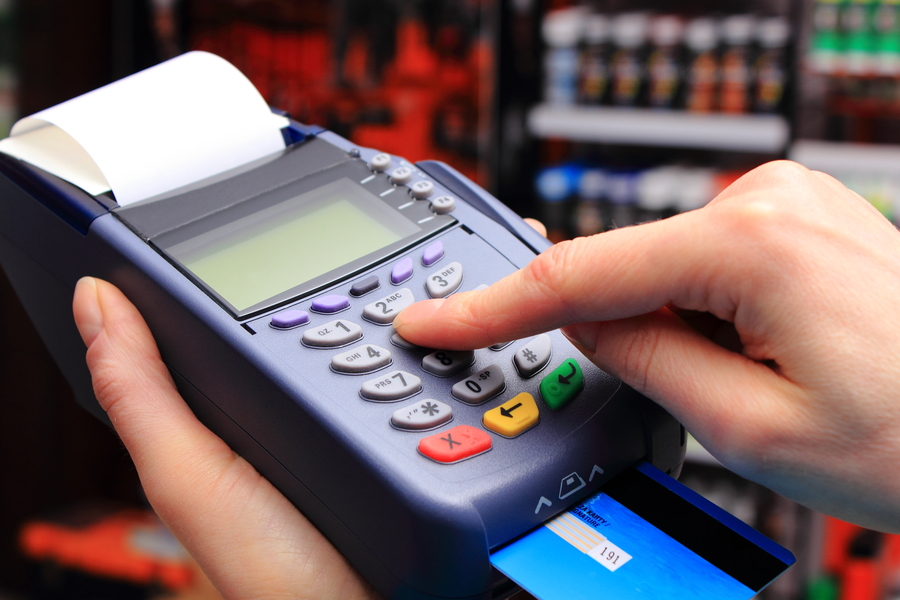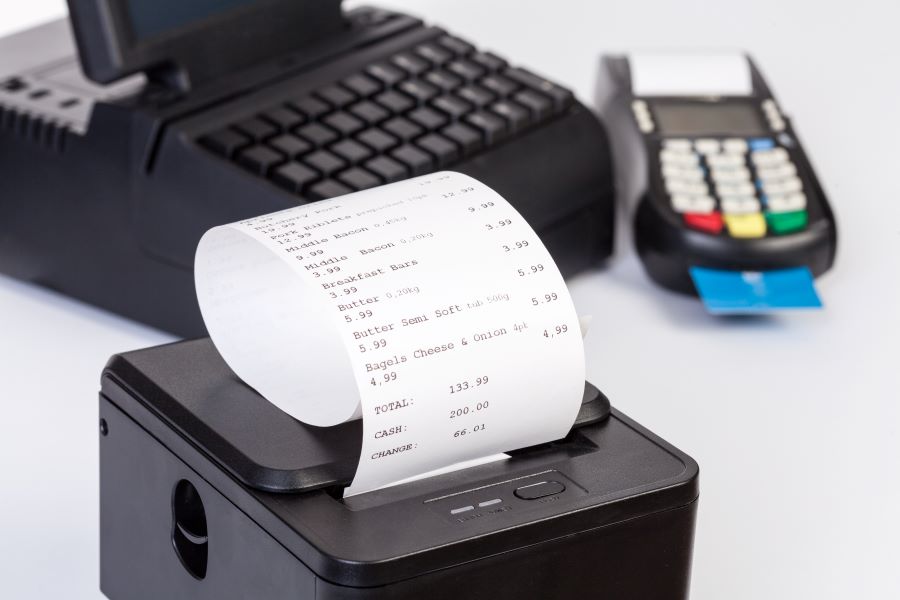Receipt paper rolls are crucial in various business settings, from retail stores to restaurants and beyond. These rolls are used in cash registers, credit card terminals, and receipt printers to produce printed records of transactions.
Thermal paper is one of the most commonly used receipt paper rolls. Thermal paper rolls are coated with a special chemical composition that produces an image on the paper when exposed to heat from the thermal print head. This type of paper is widely used due to its fast printing speed, high image stability, and low maintenance costs.
Another type of receipt paper roll is bond paper. This type of paper is made from wood pulp and has a smooth surface, making it perfect for applications that require traditional printing, such as receipts that need to be signed or documents that will be archived for a long time.
Carbonless paper rolls, or NCR (No Carbon Required), create duplicate or triplicate copies of receipts or forms. This type of paper has a chemical coating that transfers the image onto subsequent layers without carbon paper.
By understanding the different types of receipt paper rolls and their applications, business owners can choose the most suitable option for their needs. Whether it’s thermal paper for quick and reliable printing, bond paper for traditional printing requirements, or carbonless paper for creating duplicate copies, a receipt paper roll is designed to meet every business’s unique requirements.
Till rolls for different machines
Till rolls, also known as receipt paper rolls, are essential for printing receipts in various machines. These include cash registers, tablet POS registers, standalone receipt printers, card machines, and smart POS terminals. Each machine requires different sizes, types of paper, and ply counts for their till rolls.
Cash registers often use thermal paper rolls, which provide quick printing and do not require any ink or toner. These rolls are commonly available in sizes such as 57mm, 80mm, or 82.5mm widths.
Tablet POS registers typically utilize smaller paper rolls, such as 2.25-inch wide thermal rolls or 3-inch wide bond paper rolls. Compact and lightweight, these machines benefit from the portability offered by smaller till rolls.
Standalone receipt printers, as the name suggests, are dedicated printers solely for printing receipts. They can accept various sizes and types of paper rolls to accommodate different usage scenarios. Common sizes include 2.25-inch, 3-inch, and 3.125-inch widths.
Card machines, which are used for credit card transactions, often have built-in receipt printing functionality. They usually require 2.25-inch wide thermal paper rolls to generate customer receipts on the spot.
Smart POS terminals function as a combination of a cash register, card machine, and tablet POS. Therefore, these machines can support different sizes and types of till rolls, including both thermal and bond paper rolls.
In conclusion, machines that use till rolls for printing receipts have specific requirements for paper size, type, and ply count. Business owners must understand these requirements to ensure smooth operations and provide accurate and professional customer receipts.
Range of sizes
Regarding receipt paper rolls, it’s important to consider their size specifications. These rolls come in a range of sizes, including various widths, diameters, and core roll diameters. It’s crucial to check the printer requirements to ensure the roll is compatible with the machine.
A 57 mm or 58 mm width is often the standard for card machines. These machines typically require a compact roll size to generate customer receipts efficiently. On the other hand, standalone receipt printers commonly accept larger rolls, with an 80 mm width being a common option. These printers often have higher paper capacity and are ideal for businesses with higher printing demands.

Each type of machine may have different size requirements, so verifying the printer’s specifications is essential before purchasing the rolls. Factors such as the width, diameter, and core roll diameter can vary, and using the wrong size can lead to printing errors or even damage to the machine.
In conclusion, the sizes of receipt paper rolls can vary depending on the type of machine they are intended for. Checking the printer requirements for size acceptance is crucial to ensure proper functionality and avoid potential issues.
Types of material
When selecting receipt paper rolls, there are different materials to consider. The two main types are thermal paper and non-thermal paper.
Thermal paper is heat-sensitive and does not require ink for printing. It relies on a special chemical coating that reacts with a thermal print head to produce the desired image. This makes thermal paper rolls a popular choice for many businesses, as they offer fast and efficient printing without the need for ink cartridges or ribbons.
However, it’s important to know the environmental concerns associated with certain chemicals used in thermal paper coatings, such as BPA (bisphenol A). BPA has been linked to potential health risks and is not biodegradable, making it environmentally harmful. As a result, many businesses are now opting for BPA-free thermal paper or exploring alternatives to thermal paper altogether.
On the other hand, non-thermal paper is used with ink printers and does require ink for printing. It is a more traditional option compared to thermal paper. Non-thermal paper rolls are suitable for businesses that prefer regular printer ink or have specific printing requirements that thermal paper cannot meet.
When choosing receipt paper rolls, consider the type of printer or machine you are using and the specific needs of your business. It is always advisable to check the printer’s specifications and choose a high-quality paper that meets your environmentally friendly requirements.
Single- vs. multi-ply paper
When it comes to receipt paper rolls, there are different options available to meet various business needs. One important aspect to consider is whether to choose single-ply or multi-ply paper.
Single-ply paper is the most common type of receipt paper. It consists of a single layer of paper and is typically used for everyday transactions and general receipt printing. The advantage of single-ply paper is its cost-effectiveness and compatibility with most receipt printers and cash registers.
On the other hand, multi-ply paper offers a unique advantage for businesses that require copies of receipts. Multi-ply paper rolls have multiple layers, usually two or three, chemically treated to create a copy upon impact. When a transaction is processed, the pressure from the printer or cash register causes a chemical reaction between the layers, resulting in an instant copy of the receipt without additional equipment like carbon paper. This can be particularly useful for businesses that need duplicate receipts for record-keeping or customer disputes.
When considering receipt paper options, evaluating whether single-ply or multi-ply paper is more suitable for your business requirements is important. Single-ply paper is ideal for everyday use, while multi-ply paper provides the convenience of generating instant copies. Selecting the right type of paper can ensure efficient and accurate receipt printing for your business.

Are there alternatives for paper receipts?
In today’s digital age, there are alternatives to traditional paper receipts. Modern point of sale (POS) systems and card terminals offer the option to email or text digital receipts. This convenient alternative eliminates the need for paper and provides a more eco-friendly solution.
Digital receipts have numerous advantages. They are easily accessible and stored in electronic formats for future reference. Additionally, digital receipts reduce the clutter associated with paper documents and make it easier to track and organize expenses.
One of the main benefits of digital receipts is their environmental impact. With the increasing concern for sustainability, businesses and consumers are looking for ways to reduce paper waste. Individuals can contribute to this cause by reducing their carbon footprint by opting for digital receipts.
However, it is worth noting that not all card machines and cash registers offer the option to skip receipt printing. In such cases, businesses must advocate for eco-friendly practices and explore alternative solutions that minimize paper usage.
In conclusion, while paper receipts have been the norm for many years, digital receipts have emerged as a viable alternative. They offer convenience, organization, and, most importantly, a more sustainable option for businesses and consumers.


